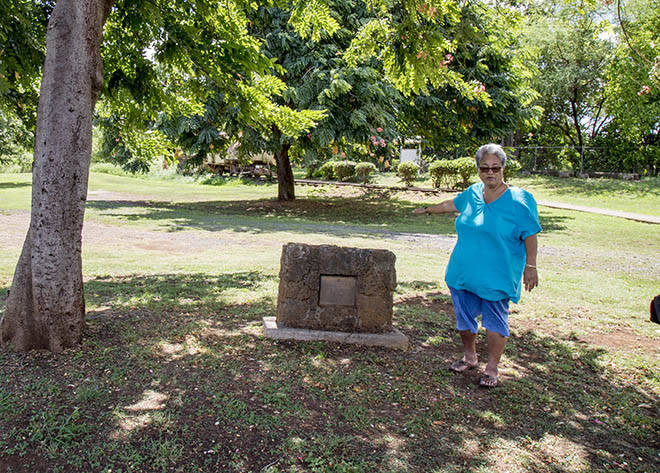Despite ongoing pushes to shed Hawaii’s ranking as having the highest per capita rate of homelessness nationwide, the problem persists. And due to the near-constant presence of encampments edging some Oahu parks and other high-visibility areas, much of the shock value is gone.
Even so, the routine scene of life on the streets cannot be tolerated. It’s unhealthy and dangerous, to campers and neighbors alike. As encampments have shifted toward residential areas, bringing crime and other problems with them, public safety concerns have increased.
Among the latest welcome city-state efforts to connect homeless individuals with immediate shelter and a fresh start is a pop-up operation called Homeless Outreach and Navigation for Unsheltered Persons, or HONU. Its first stop: Waipahu Cultural Garden Park — home to Hawaii’s Plantation Village.
Along with an all-in-one “navigation center,” which will offer a wide range of social services in addition to hot showers and beds for about 20 people at a time, police plan to impose a crackdown on violation of city ordinances — including two established last fall that ban obstructing and “lodging” on Oahu sidewalks — within a 5-mile radius of the HONU site.
This strategy holds promise to serve as a nimble and compassionate improvement over enforcement tactics that have resulted in a repeat-cycle of the hauling away of truckloads of camp framework and trash while scattering campers from one neighborhood to the next.
Further, it’s encouraging that the HONU idea is homegrown — hatched by a Honolulu Police Department captain who was frustrated by the apparent futility of enforcement without services for the homeless at the ready.
The concept of temporarily lifting park rules to allow a mobile navigation center to triage people toward help in a safe, sanitary space was successfully pitched last year to the Honolulu Police Commission and City Council.
Given that it dovetails with an intent of the 2017 Legislature, which allocated $30 million to open six “ohana zones” statewide, on state or county land, to tackle homelessness, it seems fitting that funding for a three-year HONU pilot will come from that source.
The bulk of HONU’s $6 million budget will be spent on staffing, including a stepped-up HPD presence. The balance will pay for the navigation center setup, including “military grade” inflatable structures, which are expected to be in place for a December opening.
Given that many among thousands of homeless individuals on Oahu are grappling with mental illness and addiction, HPD, under Chief Susan Ballard’s leadership, is rightly making a concerted effort to expand training for officers who serve as first responders in cases of mental health crisis.
Officers who have completed training focused on how to peacefully defuse potentially dangerous confrontation, such as that offered by the Crisis Intervention Team — an HPD partnership with the National Alliance on Mental Illness Hawaii, Hawaii Health and Harm Reduction Center and other community partners — should be heading up HONU’s law enforcement.
The setup in Waipahu will serve as a test site before HONU moves to city parks in the urban core, where the 90-day hub will attract more homeless people and community attention. Honolulu Hale has already specified that HONU will not touch down in any place that’s adjacent to a school, and will avoid restricting outdoor park activities.
Still, for some, the envisioned 50-yard-by-50-yard HONU navigation center setup — covering the space of about half a football field — will likely be seen as an eyesore. However, if it’s successful in steadily ushering people off the streets and into permanent housing and a better future, the traveling pop-up could become a sight for sore eyes.
Correction: Evelyn Ahlo was misidentified as Pamela A. Witty-Oakland in the caption of an early version of this story.

